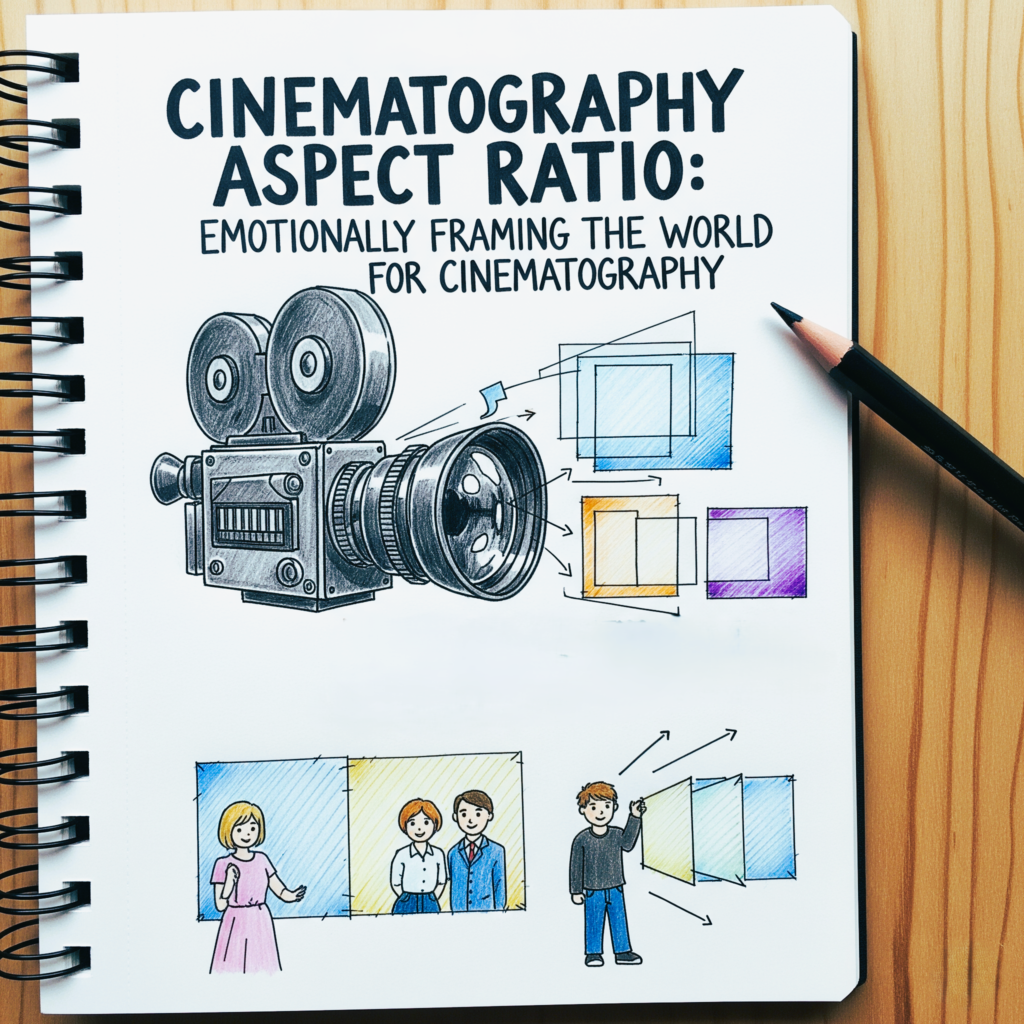
Cinematography Aspect Ratio: Emotionally Framing the World
Sometimes more than simply the acting, the lighting, or the script contributes to a film’s impactful feeling. Occasionally, it’s the frame’s actual form.
That “shape” is known as the aspect ratio, and it is one of the most understated yet emotionally impactful cinematographic techniques. It establishes composition, generates a certain cinematic language, and delineates the limits of your visual universe.
Knowing the Aspect Ratio of Cinematography
A key idea in cinematography, aspect ratio establishes the connection between an image’s width and height. Usually, it’s written as two integers with a comma between them, as 16:9 or 2.39:1. In addition to influencing a film’s visual composition, this ratio also has an impact on how viewers interpret the narrative.
This blog will look at:
- In cinematography, what is aspect ratio?
- Why it’s important both visually and emotionally.
- Traditional and widely used formats for TV and movies.
- And the less common, non-standard aspect ratios that defy convention.
In cinematography, what is the aspect ratio?
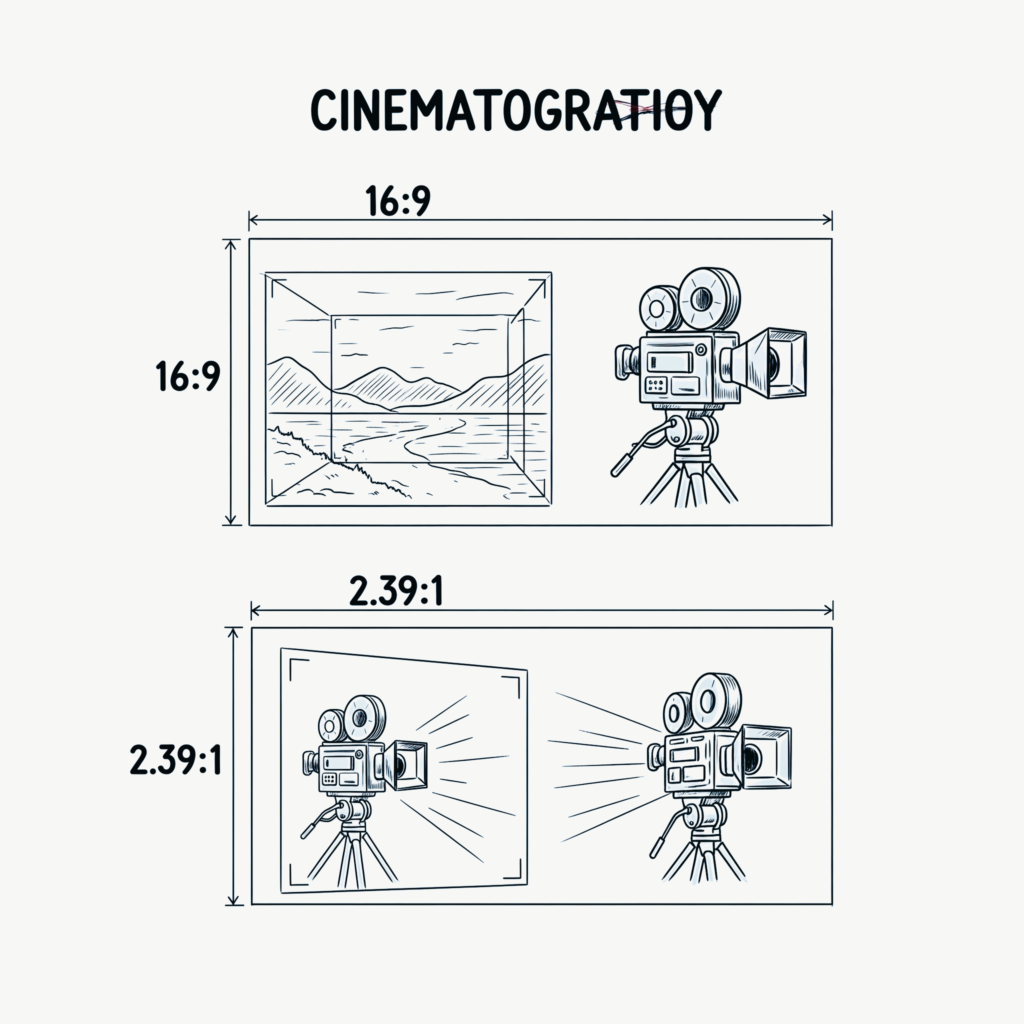
Simply said, aspect ratio is the proportionate connection between a frame’s height and breadth. For instance, in contemporary television and movies, a 16:9 aspect ratio indicates that there are 9 units of height for every 16 units of width. Because it offers a widescreen format that improves the viewing experience, this Aspect ratio is common in HD television and internet streaming services. Usually, it is expressed as W:H, as 16:9 or 2.39:1.
It provides information about how large and tall this image is.
It is a visual language that influences style, narrative, and emotion and is more than just a number.
Why Aspect Ratio Is Important
What is impacted by the aspect ratio?
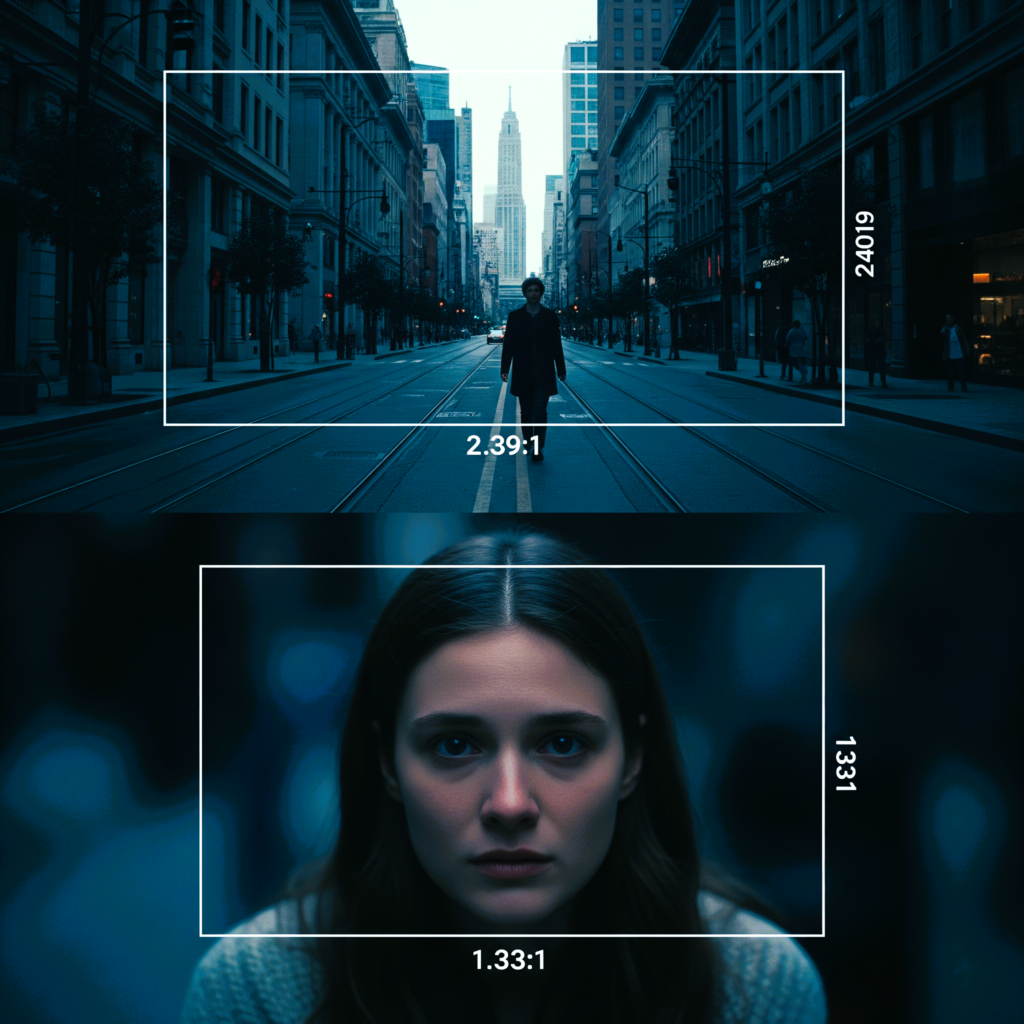
- The way you portray your characters.
- What goes well with the scene.
- Viewers’ perceptions of drama, size, and closeness.
- The general mood of emotion.
As an example:
- A square frame (1.33:1) has a cozy, constrained, and sentimental vibe.
- It feels epic, cinematic, remote, or alienating to use a wide frame (2.39:1).
Aspect ratios for traditional television
Here are a few typical aspect ratios found in conventional television before we go on to the more dramatic formats:
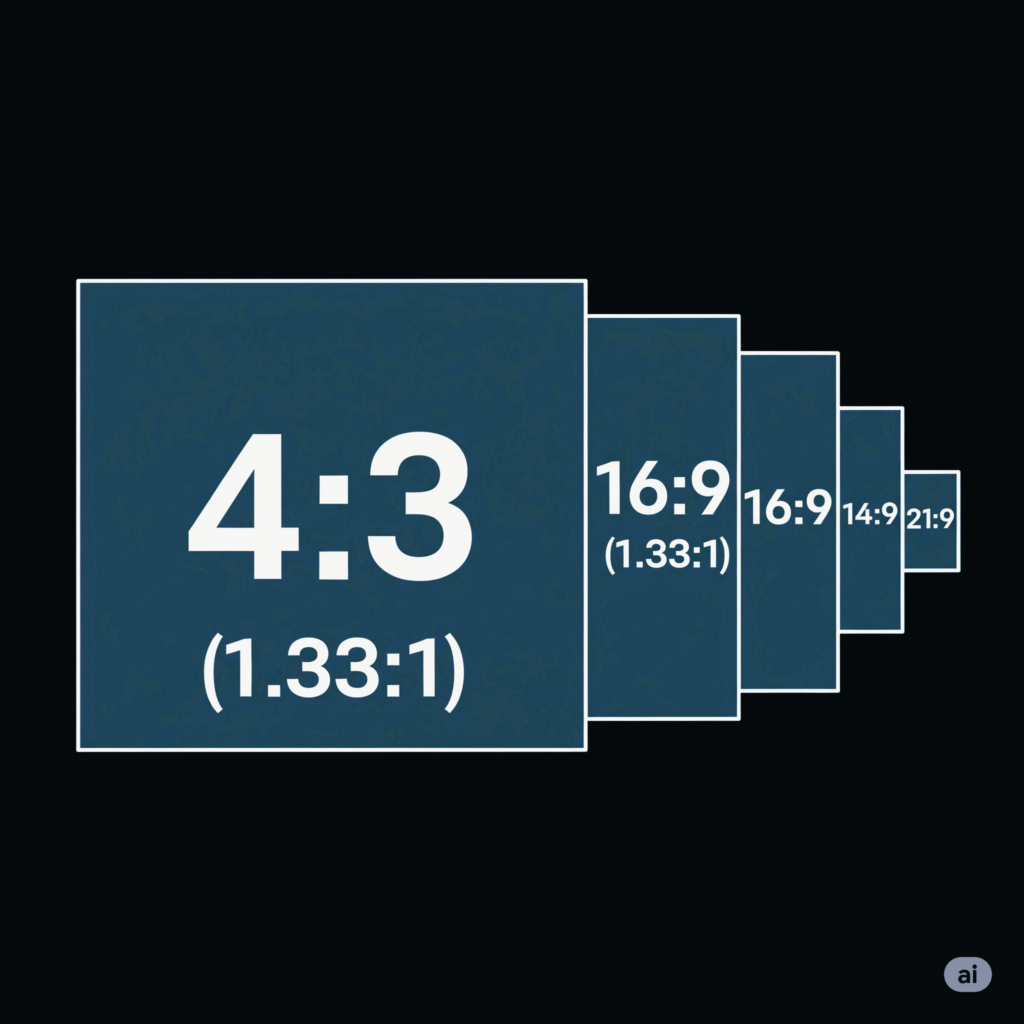
- 4:3 (1.33:1)
- Early broadcast shows, VHS cassettes, and old televisions
- used prior to the widespread adoption of widescreen.
- Emotionally: Simplicity, tightness, and nostalgia.
2. The Modern TV Standard is 16:9 (1.78:1).
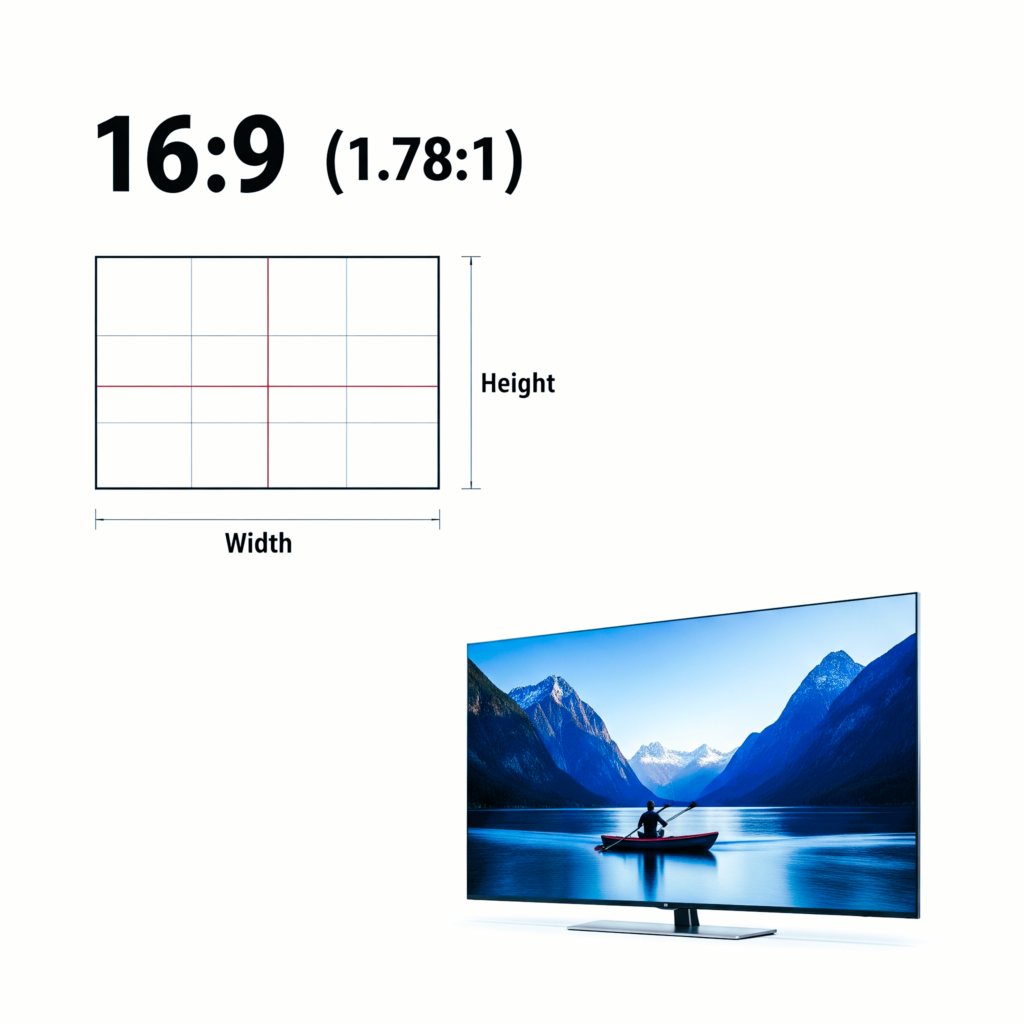
- Default for streaming services, YouTube, and HD TV.
- strikes a good balance between height and breadth for general viewing.
- Emotionally, it feels balanced, neutral, and natural.
These are frequently employed, yet with film, we transcend convention.
The ratios of cinematic aspects
- 2.39:1 (anamorphic widescreen/cinemascope)
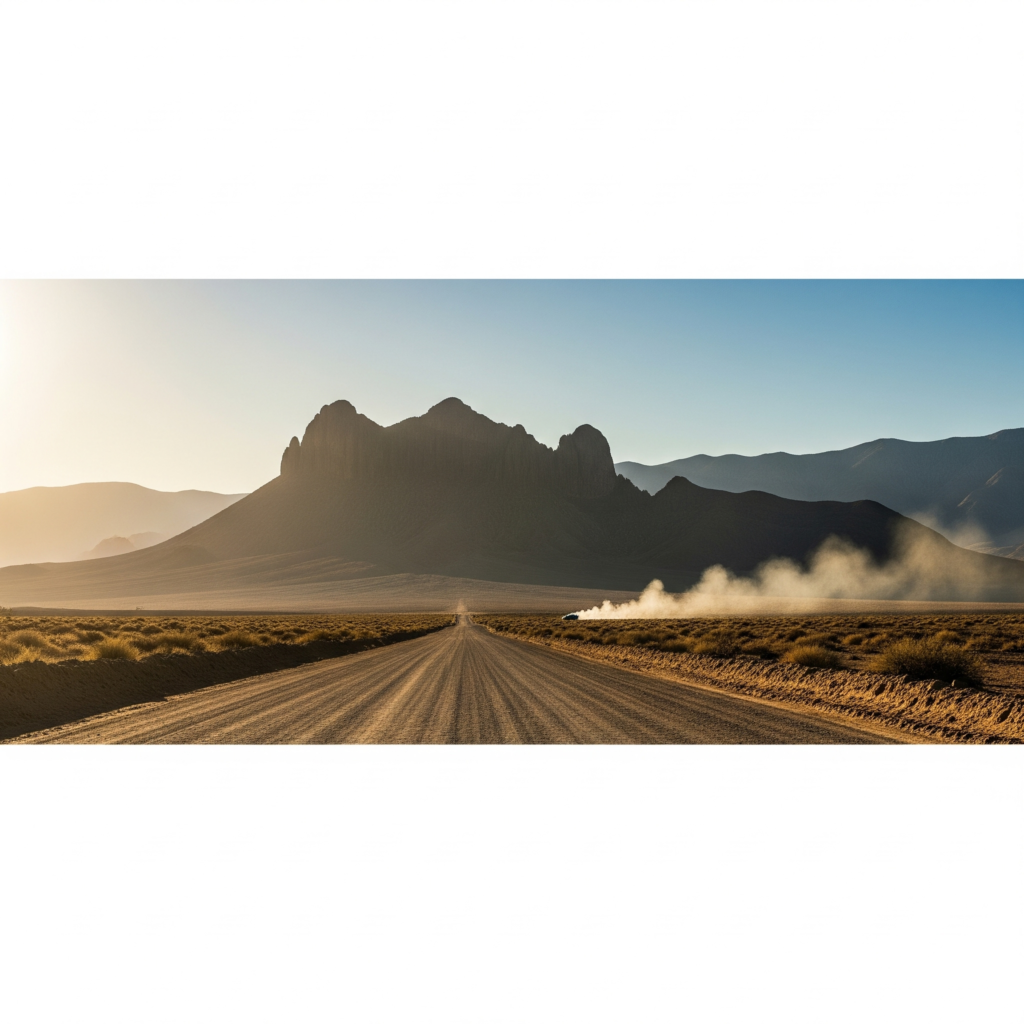
- the most widely utilized widescreen format for motion pictures.
- Action, science fiction, and historical plays all employ epic and engrossing storytelling.
- Emotionally: It seems imposing, far away, and stylized.
Used in Mad Max: Fury Road, Dune, and Interstellar
2. 1.85:1
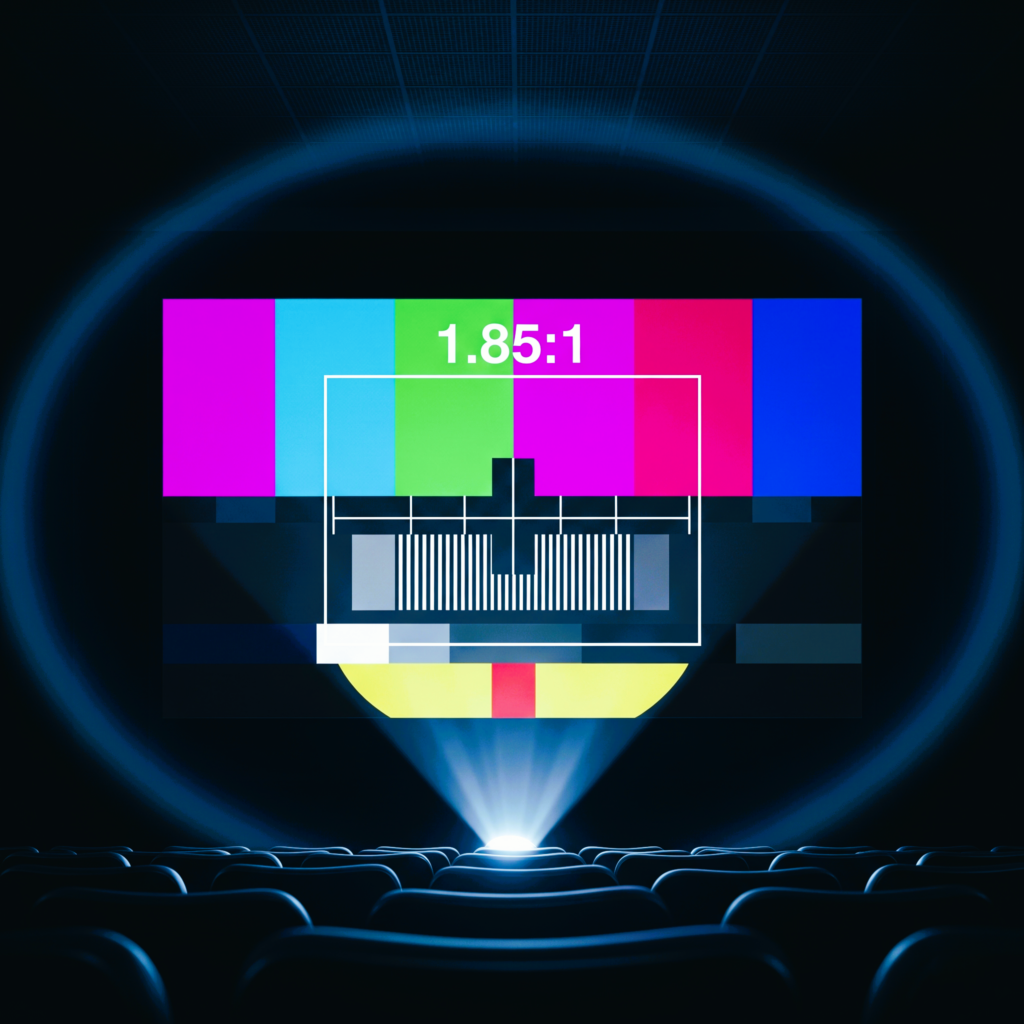
- a typical theatrical format that is somewhat larger than 16:9.
- frequently seen in comedies and dramas in Hollywood.
- Emotionally: Still cinematic, but more personal than 2.39:1.
Used in: Lady Bird, The Social Network
3. The Academy Ratio is 1.37:1.

- Before widescreen gained popularity in the 1930s and 1950s, it was standard.
- employed purposefully in contemporary independent films as well.
Used in: First Reformed, The Lighthouse, and The Grand Budapest Hotel
Emotionally: Reminiscent, confined, cramped, or timeless.
Aspect ratios that are uncommon and experimental
Now, let’s examine aspect ratios that deviate from the standard. In movies, they are frequently used for artistic purposes, although they are not frequently utilized in conventional TV or commercial formats.
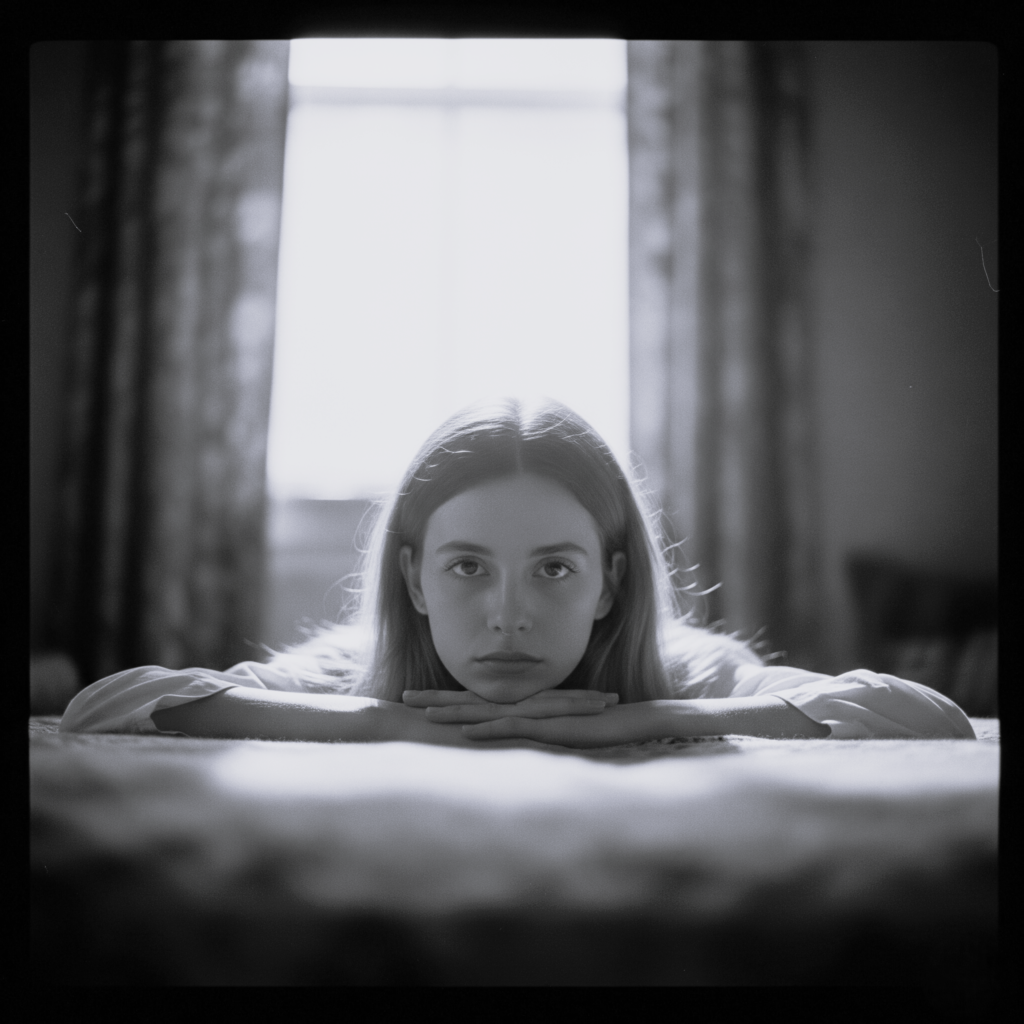
- 1:1 (Square Frame)
- Instagram, images optimized for mobile devices, and experimental movies.
- emotionally concentrated and visually sharp.
Used in: A Ghost Story
Emotion: solitude, austerity, and self-reflection.
2. 2:1 (Univisium)
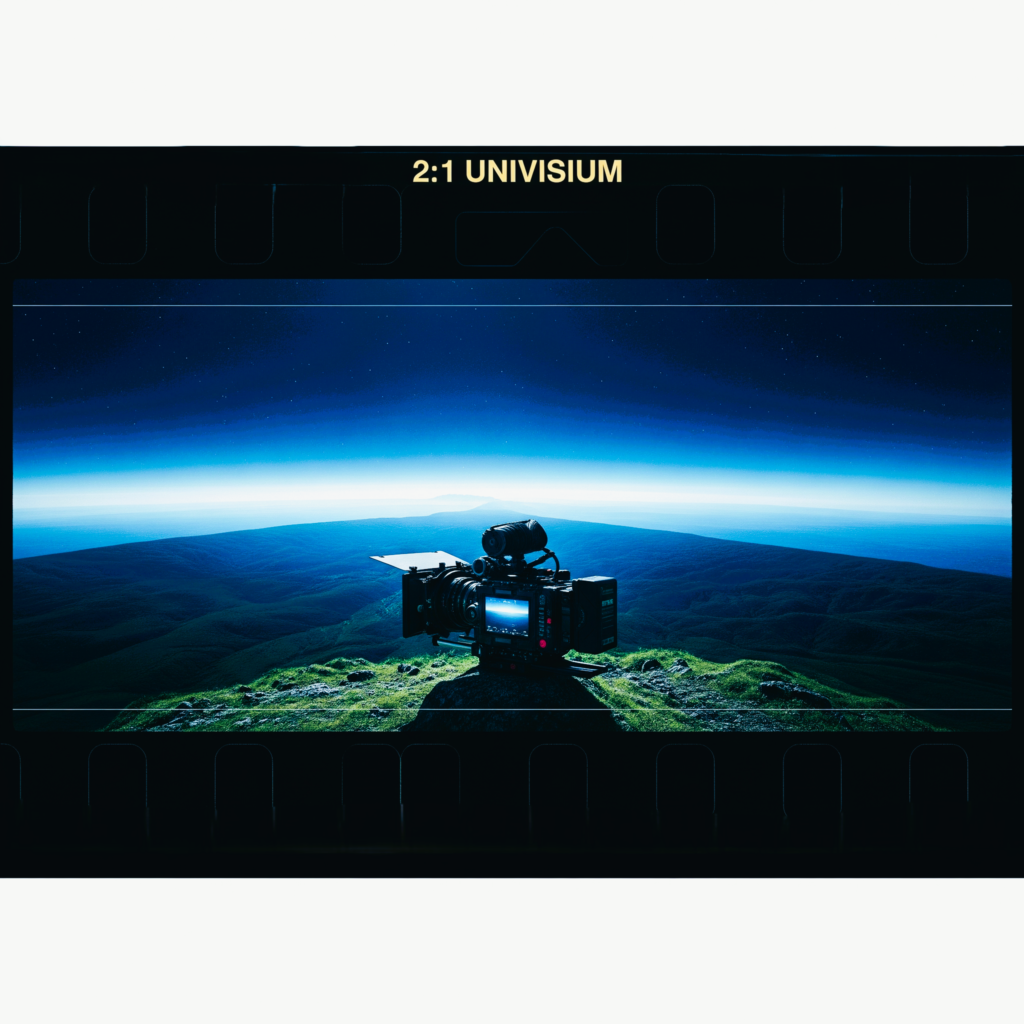
- growing in popularity for some movies, Netflix, and streaming services.
- Choose between conventional HD and widescreen.
Used in: House of Cards, Roma
Emotion: Flexible, contemporary, and clean.
3. 2.76:1 (Ultra Panavision)
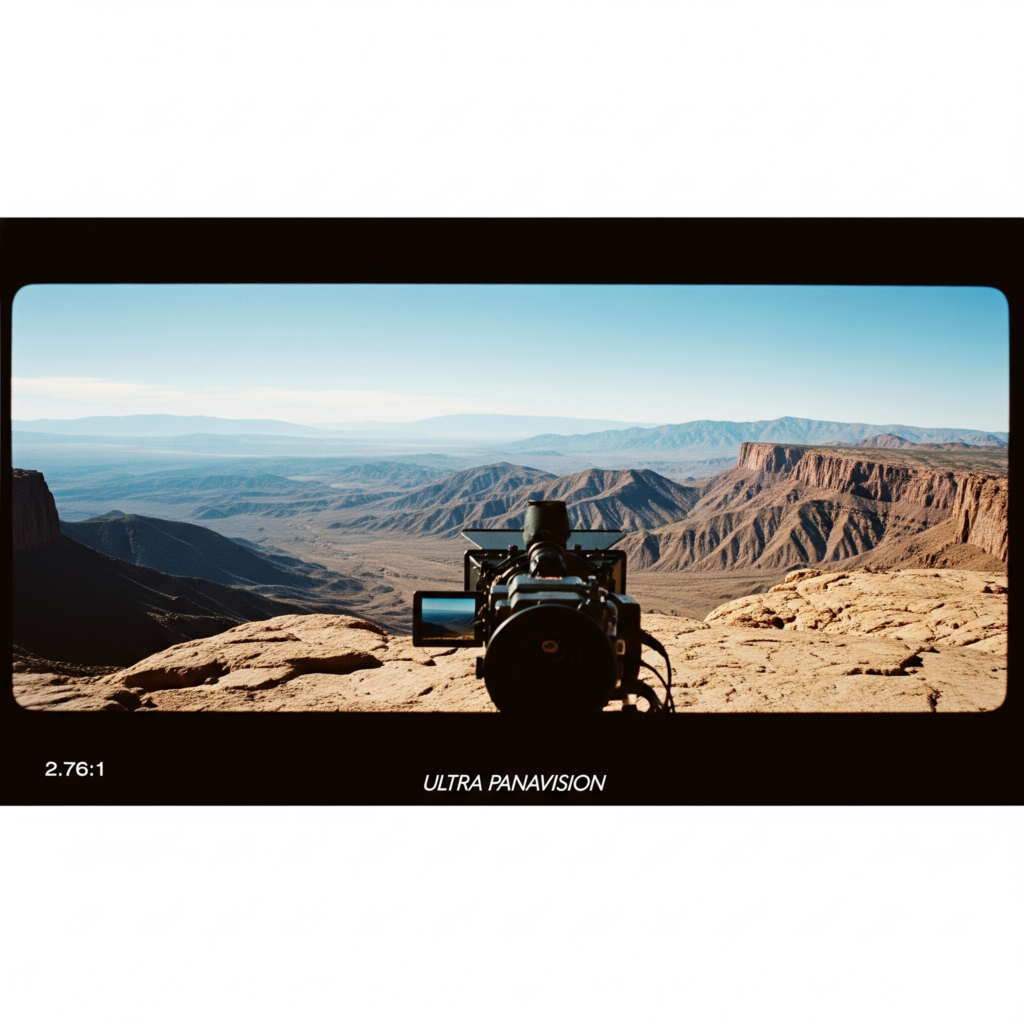
- Historical epics employ an ultra-wide format.
- Expensive, hard to compose, rare, yet beautiful.
Used in: Ben-Hur (1959), The Hateful Eight
Emotion: Majestic, theatrical, immersive
4. 9:16 (Vertical Video)
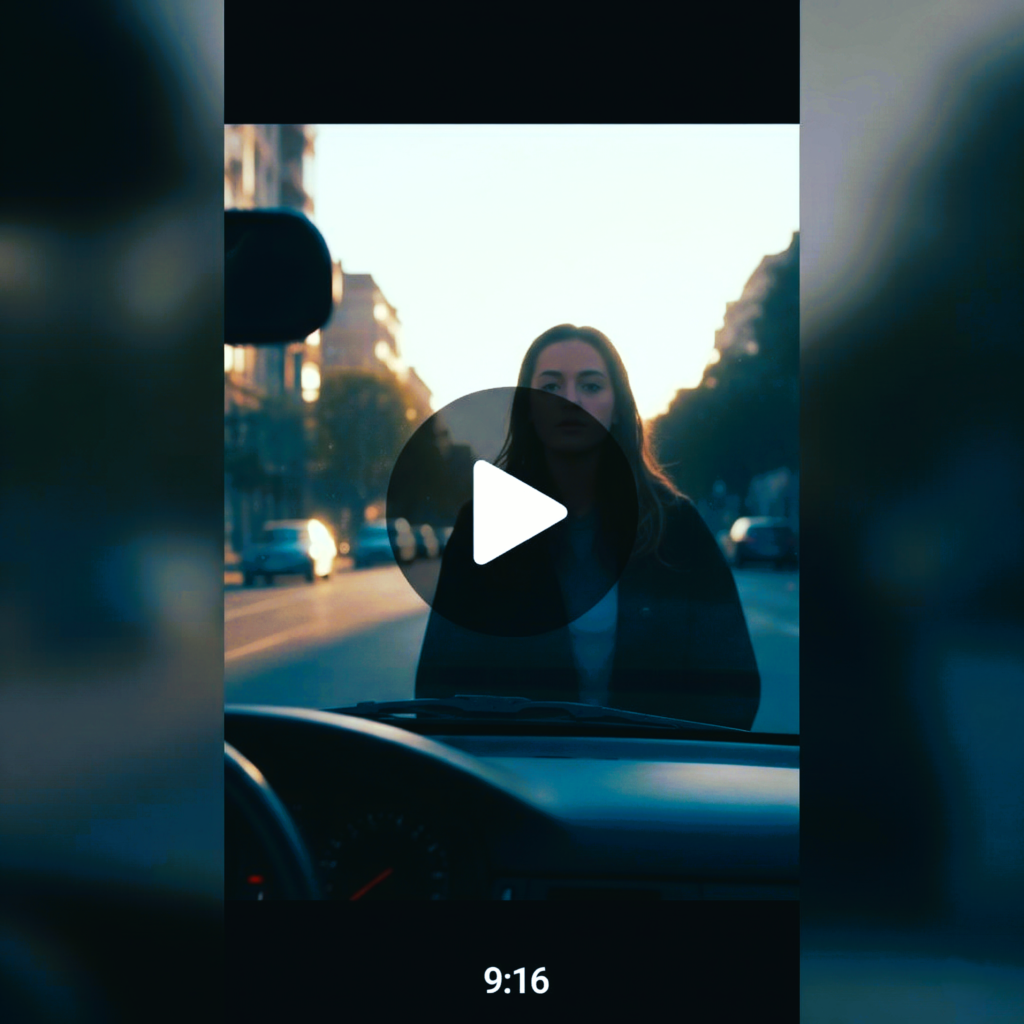
- designed for TikTok, Instagram Stories, and smartphones.
- Used for mobile storytelling but never in traditional cinema
Uses include social documentaries and vertical music videos.
Emotion: Quick, intimate, and informal.
Tips for Cinematographers on How to Select the Proper Aspect Ratio
Question yourself:
- What is the emotional tone of the story?
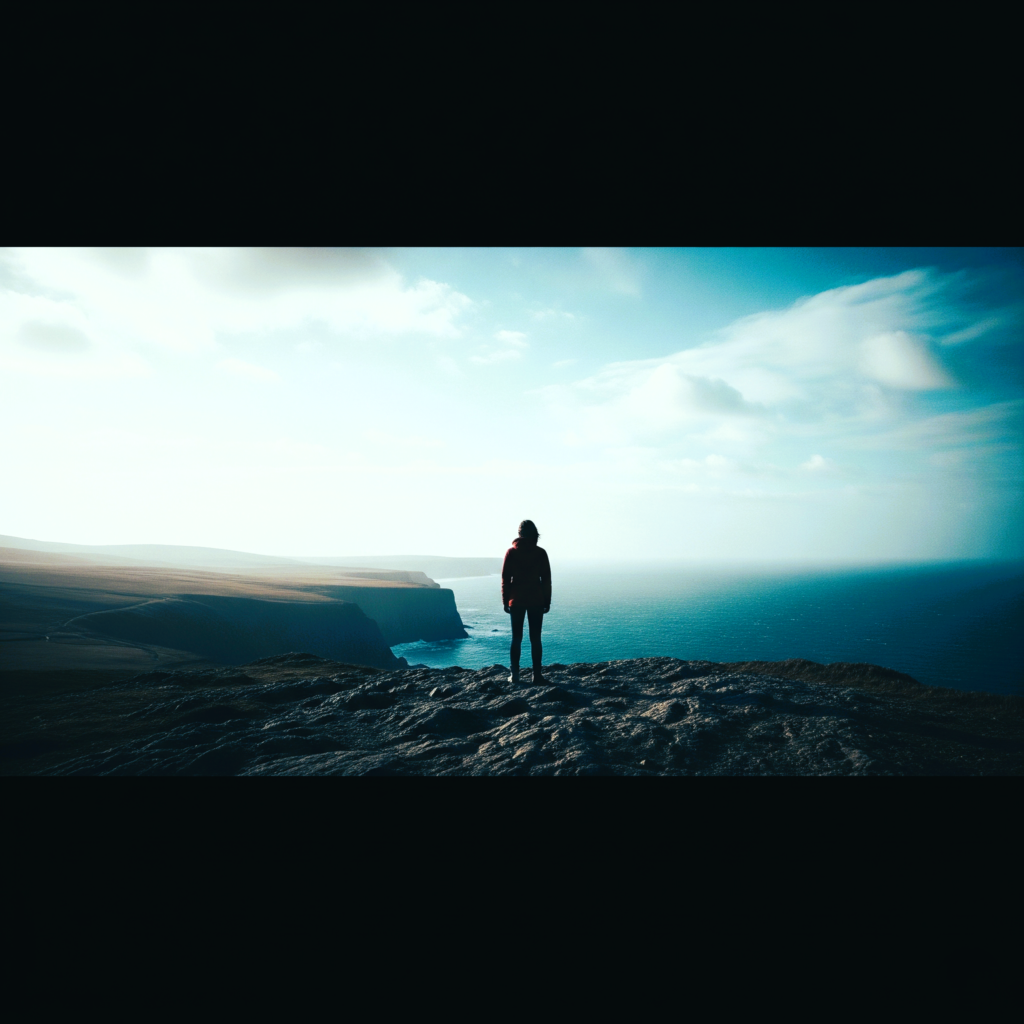
- Restricted? Go 4:3 or square.
- Epic? Make the screen wide.
2. Where can we view the movie?
- Primarily mobile? Take 1:1 or vertical into consideration.
- theater? Select widescreen cinema.
3. Which frame style do you use?
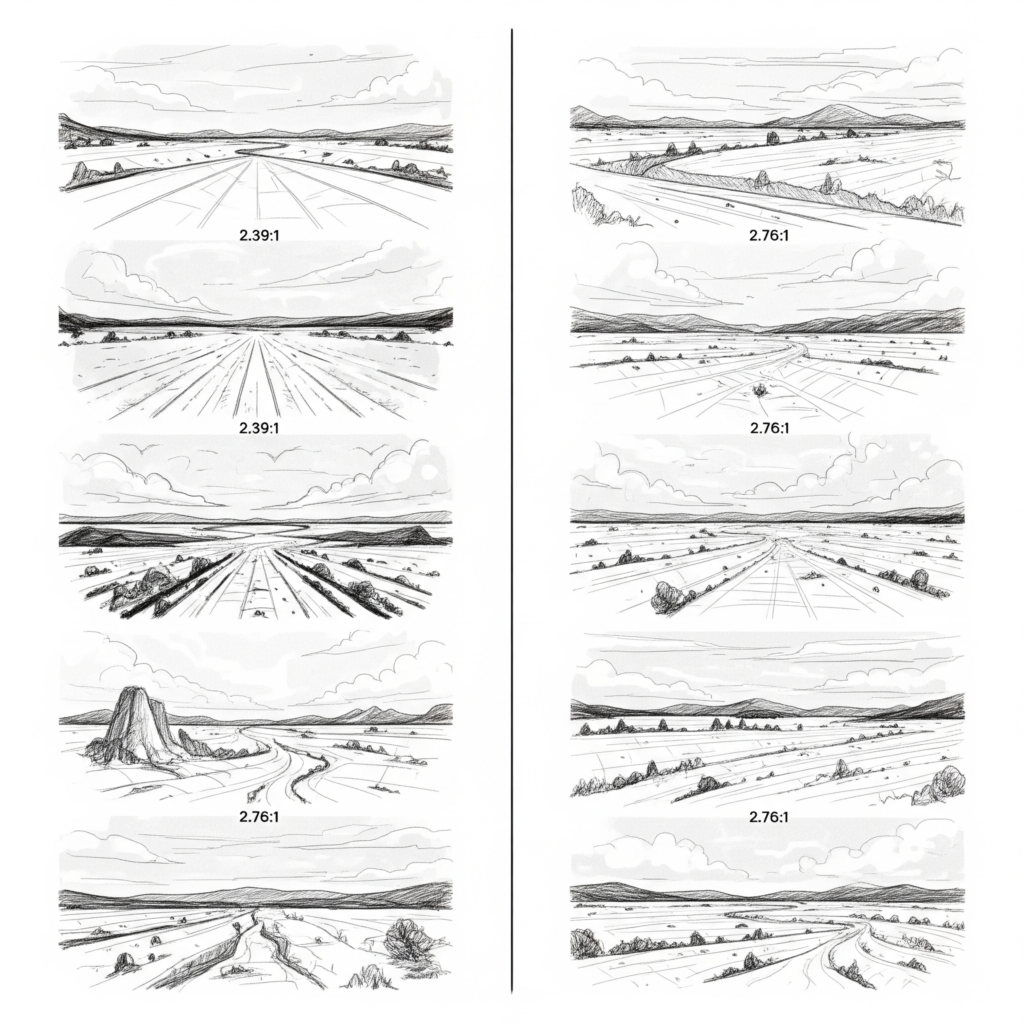
- Symmetry or more headroom? Aim for 1.85:2.
- expansive landscapes. Either 2.39:1 or 2.76:1.
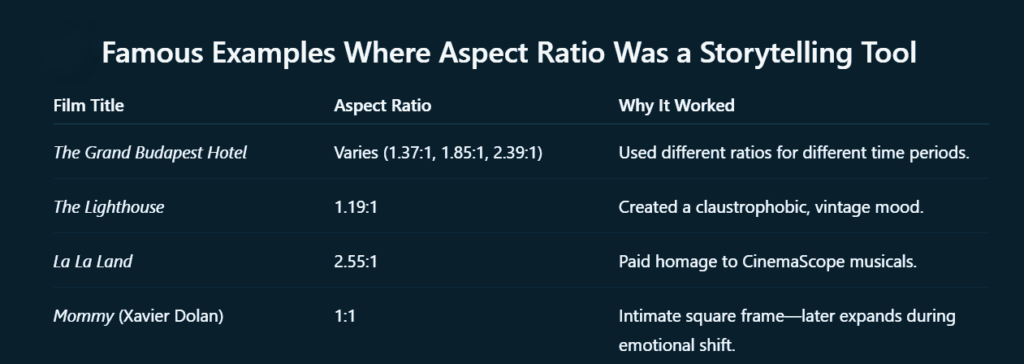
Aspect Ratio Management Tools for Production
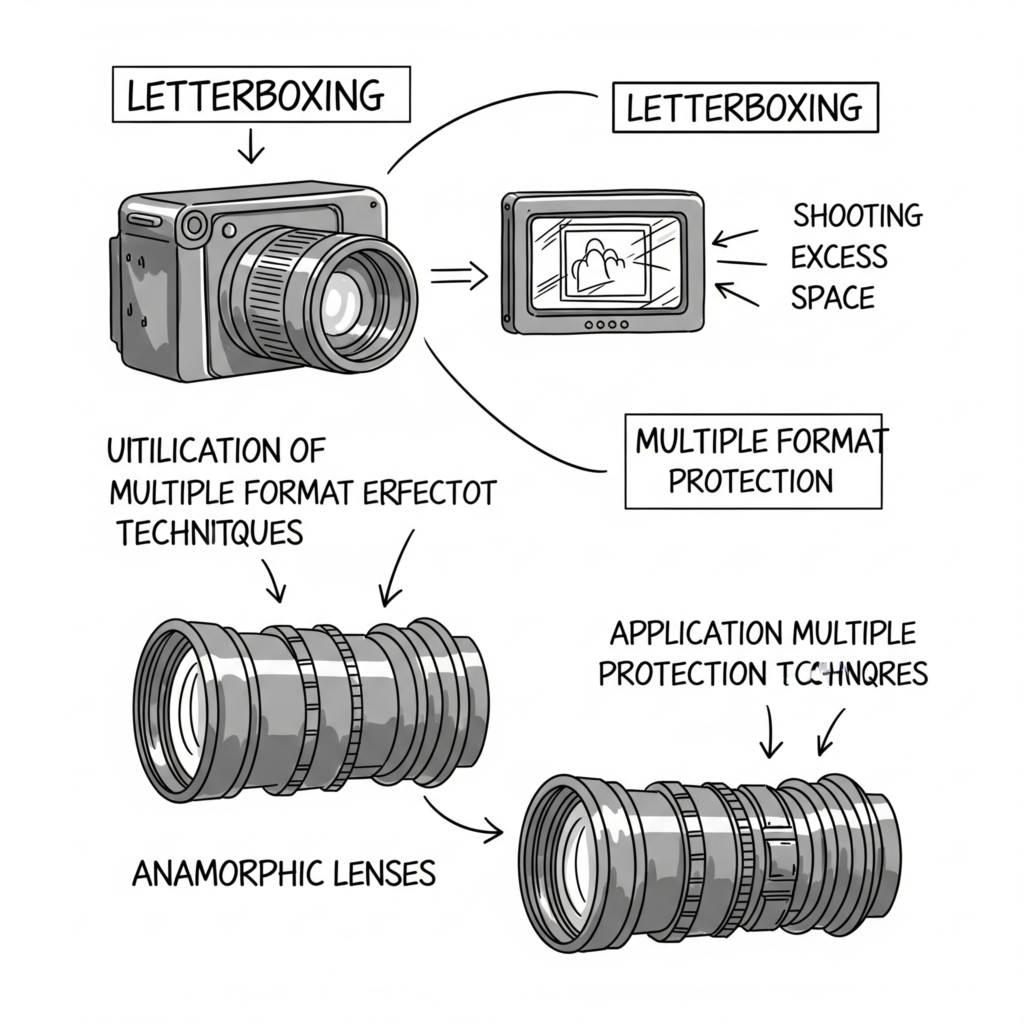
- Guides for framing in camera monitors
- Letterboxing using editing tools in post
- Shooting with excess space (multiple format protection)
- The use of anamorphic lenses for widescreen
Tip: Prior to the shot, always prepare your aspect ratio. It impacts lighting, framing, blocking, and lens selection.
In summary, your voice is your frame.
Your aspect ratio is your canvas in cinematography.
It becomes clear to the viewer where the world ends and emotion starts.
Therefore, don’t just ask, “What lens should I use?”
“What form should this story take?” ask.
Because the way you frame a film determines how viewers will feel about it.
Visual Storyteller and Director of Photography,
Vimall S Mishra